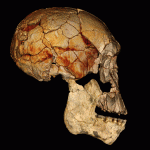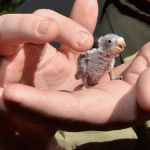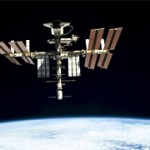
Conceptual image of comet Shoemaker-Levy 9 heading into Jupiter in July 1994. Image credit: copyright M. Showalter
A space mystery from the 1990s has been solved.
Cosmic forensics has tied the ripples in the rings of Jupiter and Saturn to collisions with cometary debris. Using the images from NASA’s Cassini, Galileo and New Horizons missions, scientists have traced the ring ripples to impacts that occurred over 10 years ago.
In Jupiter’s case, the culprit is the comet Shoemaker-Levy 9, which collided with the planet in 1994.
Scientists believe that Saturn’s ripples may be caused by a similar event, such as comet debris passing through the rings in 1983. Research associate Mark Hedman, Cornell University, said in the press release “We’re finding evidence that a planet’s rings can be affected by specific, traceable events that happened in the last 30 years, rather than a hundred million years ago.”
“The solar system is a much more dynamic place than we gave it credit for.”
Galileo’s visit to Jupiter revealed patchy patterns in the Jovian ring, but scientists were unsure as to the reason behind this. Then Cassini entered Saturn’s orbit in 2004 and sent back images that revealed corrugations in the innermost ring (D ring).
Scientists got another clue to the mystery when, in 2009, the sun lit Saturn’s rings edges, revealing that a collision had tilted an area over 19,000 kilometres wide. A study of the Galileo images also revealed that Jupiter’s Jovian ring had also been tilted off its axis by the collision in 1994.
Mark Showalter, a Cassini co-investigator, said: “We now know that collisions into the rings are very common ““ a few times per decade for Jupiter and a few times per century for Saturn. Today scientists know that the rings record these impacts like grooves in a vinyl record, and we can play back their history later.”
The ripples can also tell us how large the clouds of cometary debris were when they struck the rings. For example, the comets that recently hit Jupiter and Saturn both had nuclei several kilometres wide.
“Finding these fingerprints still in the rings is amazing and helps us better understand impact processes in our solar system,” said Linda Spilker, Cassini project scientist. “Cassini’s long sojourn around Saturn has helped us tease out subtle clues that tell us about the history of our origins.”






